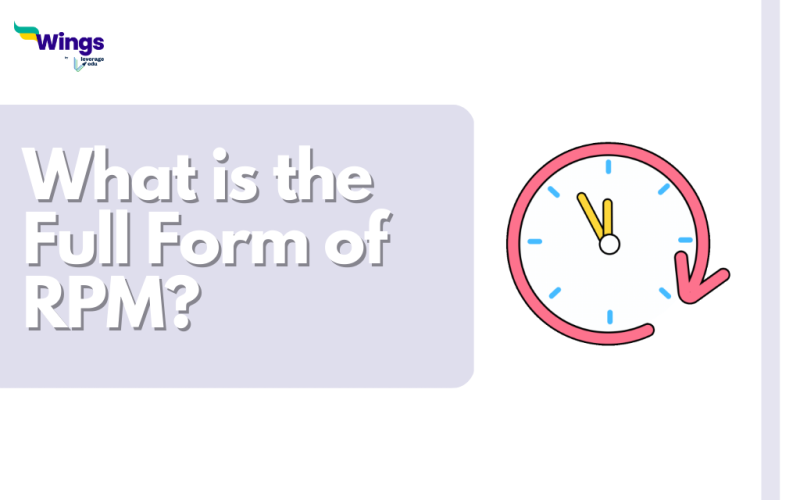The RPM full form is Revolutions Per Minute. RPM deals with the frequency of object rotation and the number of rotations per minute. Through RPM it is easy to figure out how frequently the object can spin around its axis. Hence, the speed or frequency of an involuntary object’s rotation like the engine’s crankshaft, DVD/CD player, or turbine power generator can be found. For example, the RPM of the Earth is 000694.
Table of Contents [show]
How are RPMs calculated?
The RPM full form is Revolutions Per Minute. RPM can be calculated by following the mathematical formula.
RPM= Revolutions / Time in Minutes.
Benefits and Risks of RPM
The benefits and risks of RPM are as follows:
| Benefits | Risks |
| Performance improvement | Chances of accidents |
| The probability of the engine seizing up | Probability of the engine seizing up |
| Enhancement of fuel economy | Excessive wear and tear on the engine |
Washing Machine RPM
The RPM of a washing machine is significant as it determines the speed of the agitator. A low RPM means a low spin cycle and a fast RPM means a faster spin cycle. It can ultimately help in analyzing the time required to wash laundry.
Car RPM
It is important to determine the importance of the RPM of a car to measure the speed of the engine. RPM can indicate the number of revolutions in 60 seconds taken by a car engine.
Examples of RPM
Here are some examples of RPM
- Using an air turbine, dental drills can rotate up to 13.3 kHz. It can be also known as 800,000 RPM
- The rotational speed of an analog clock with a second hand is also called one RPM
- 500 to 2000 RPM is the rotational speed of a washing machine’s drum
Also read: What is the Full Form of ICMR?
FAQ
RPM stands for Revolutions Per Minute. It measures the rotational speed of an object. Most ordinary car gas engines operate efficiently between 1500 and 7000 RPM.
7000 RPM means an engine’s crankshaft completes 7000 full rotations in one minute.
Horsepower (hp) is a measure of power, while RPM is a measure of rotational speed. There’s no direct conversion between the two, as they measure different things. However, the formula to calculate horsepower involves RPM and torque: HP = (Torque x RPM) / 5252.
This was all about the RPM Full Form. Visit our Full Form Page to discover more intriguing articles about full forms. You can also get a consolidated list of 300+ full forms here! Get in touch with the experts at Leverage Edu in order to kickstart your study abroadjourney!
 One app for all your study abroad needs
One app for all your study abroad needs















 45,000+ students trusted us with their dreams. Take the first step today!
45,000+ students trusted us with their dreams. Take the first step today!
